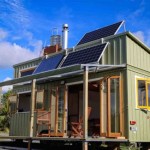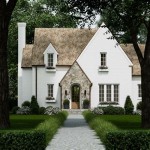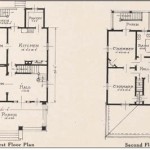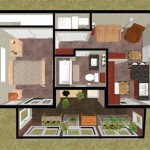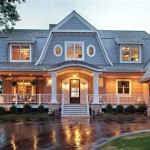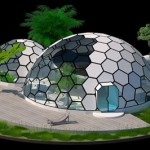Plans for a squirrel house refer to the detailed instructions and specifications used to construct a shelter for squirrels. These houses provide protection from harsh weather conditions, predators, and other environmental hazards, offering a safe and secure nesting spot for these small mammals.
Building a squirrel house not only benefits the squirrels by providing them with a comfortable and secure home, but it can also be an enjoyable and rewarding project for nature enthusiasts and DIYers. With careful planning and proper execution, constructing a squirrel house can be a fulfilling experience that contributes to the well-being of local wildlife.
In this article, we will delve into the essential aspects of planning a squirrel house, including the selection of suitable materials, the design considerations, and the step-by-step instructions for building one. We will also discuss tips for maintaining the house and ensuring the comfort and safety of the squirrel occupants.
When planning a squirrel house, it is important to consider the following key points:
- Choose durable materials
- Design for insulation
- Provide multiple entrances
- Elevate off the ground
- Include a drainage hole
- Avoid using treated wood
- Consider ventilation
- Match the size to the species
- Orient the house properly
By adhering to these guidelines, you can create a safe and comfortable home for your squirrel tenants.
Choose durable materials
When selecting materials for your squirrel house, durability is paramount. Squirrels are active and playful creatures, and their home should be able to withstand their antics. Avoid using materials that are easily chewed through, such as cardboard or thin plastic. Instead, opt for sturdy materials like wood, metal, or thick plastic.
Wood is a popular choice for squirrel houses because it is durable, insulative, and relatively easy to work with. Cedar and redwood are good options because they are naturally resistant to rot and decay. If you choose to use wood, be sure to seal it with a non-toxic water repellent to protect it from the elements.
Metal is another durable option for squirrel houses. It is strong and weather-resistant, but it can be more difficult to work with than wood. If you choose to use metal, be sure to smooth out any sharp edges and provide ventilation holes to prevent condensation.
Thick plastic can also be used to make squirrel houses. It is lightweight, weather-resistant, and easy to clean. However, it is important to choose a thick plastic that is not easily chewed through.
No matter what material you choose, be sure to use sturdy hardware to assemble the house. This will help to ensure that it can withstand the squirrels’ activity and the elements.
Design for insulation
Squirrels are small mammals that are susceptible to the cold, so it is important to design a house that provides adequate insulation. This will help to keep the squirrels warm during the winter months and prevent them from getting sick.
There are a few different ways to insulate a squirrel house. One method is to use foam insulation. Foam insulation is lightweight and easy to install, and it provides excellent insulation value. Another method is to use straw or shredded paper. Straw and shredded paper are natural insulators that are also absorbent, which can help to keep the house dry.
If you are using foam insulation, be sure to seal all of the gaps and cracks around the edges of the insulation. This will help to prevent drafts and keep the heat in.
If you are using straw or shredded paper, be sure to pack it tightly into the walls and roof of the house. This will help to create a barrier against the cold.
In addition to insulation, you can also add a layer of weatherstripping around the door and windows of the house. This will help to keep the cold air out and the warm air in.
Provide multiple entrances
Squirrels are agile creatures that like to have multiple escape routes in case of danger. Providing multiple entrances to the house will give the squirrels a sense of security and make them more likely to use the house.
- Provide at least two entrances. This will give the squirrels a way to escape if one entrance is blocked.
The entrances should be placed on opposite sides of the house so that the squirrels can easily escape in any direction.
- Make the entrances large enough for the squirrels to enter and exit easily. The entrances should be at least 2 inches wide and 3 inches high.
If the entrances are too small, the squirrels may not be able to get in or out of the house, which could be dangerous.
- Place the entrances high off the ground. This will help to protect the squirrels from predators.
The entrances should be at least 6 feet off the ground.
- Avoid placing the entrances directly facing the sun. This will help to keep the house cool in the summer.
If the entrances are facing the sun, the house could get too hot for the squirrels.
By providing multiple entrances to the house, you can make it more attractive and safer for the squirrels.
Elevate off the ground
Elevating the squirrel house off the ground is important for several reasons:
- Protection from predators. Squirrels are vulnerable to predators such as cats, snakes, and owls. Elevating the house off the ground makes it more difficult for predators to reach the squirrels.
- Protection from the elements. Rain and snow can damage the house and make it uncomfortable for the squirrels. Elevating the house off the ground helps to protect it from the elements.
- Improved ventilation. Air can circulate more easily around an elevated house, which helps to keep the house dry and free of mold and mildew.
- Easier access for the squirrels. Squirrels are more likely to use a house that is easy to access. Elevating the house off the ground makes it easier for the squirrels to enter and exit.
There are several different ways to elevate a squirrel house off the ground. One method is to use a pole. The pole should be at least 6 feet tall and should be made of a durable material such as metal or wood. The house can be attached to the pole using screws or bolts.
Another method is to use a platform. The platform can be made of wood or metal and should be at least 2 feet off the ground. The house can be attached to the platform using screws or bolts.
Whichever method you choose, be sure to elevate the house off the ground by at least 6 feet. This will help to protect the squirrels from predators, the elements, and other hazards.
Include a drainage hole
A drainage hole is an important feature of a squirrel house. It allows water to drain out of the house, which helps to keep the house dry and free of mold and mildew.
- Prevents water damage. Water can damage the house and make it uncomfortable for the squirrels. A drainage hole allows water to drain out of the house, which helps to prevent water damage.
- Prevents mold and mildew. Mold and mildew can grow in damp environments. A drainage hole helps to keep the house dry and free of mold and mildew.
- Keeps the squirrels healthy. Mold and mildew can cause respiratory problems in squirrels. A drainage hole helps to keep the house dry and free of mold and mildew, which helps to keep the squirrels healthy.
- Makes the house more comfortable. A dry house is a more comfortable house. A drainage hole helps to keep the house dry and comfortable for the squirrels.
The drainage hole should be located at the bottom of the house. It should be large enough to allow water to drain out easily, but not so large that the squirrels can escape through it.
Avoid using treated wood
Treated wood is wood that has been treated with chemicals to protect it from rot, decay, and insects. While treated wood is often used in outdoor construction projects, it is not suitable for use in squirrel houses.
The chemicals used to treat wood can be harmful to squirrels. These chemicals can cause respiratory problems, skin irritation, and other health problems. In some cases, the chemicals can even be fatal to squirrels.
In addition to the health risks, treated wood can also be a fire hazard. When treated wood burns, it releases toxic fumes that can be harmful to both squirrels and humans.
- Treated wood can leach chemicals into the environment. These chemicals can contaminate the soil and water, and they can be harmful to other animals and plants.
- Treated wood is not biodegradable. This means that it will not break down naturally over time. Instead, it will remain in the environment for many years, where it can continue to pose a health risk.
- Treated wood is more expensive than untreated wood. This is because the treatment process adds to the cost of the wood.
For all of these reasons, it is important to avoid using treated wood in squirrel houses.
Consider ventilation
Ventilation is important for any enclosed space, including a squirrel house. Proper ventilation allows fresh air to circulate through the house, which helps to keep the air clean and free of harmful pollutants.
There are several ways to provide ventilation in a squirrel house. One method is to install vents in the walls of the house. Vents can be made of metal or plastic, and they should be placed near the top of the house to allow warm air to escape.
Another method is to install a screened window in the house. A screened window will allow fresh air to circulate while keeping predators out.
It is important to provide adequate ventilation in a squirrel house, but it is also important to avoid creating drafts. Drafts can make the house uncomfortable for the squirrels and can lead to respiratory problems.
Match the size to the species
The size of the squirrel house should be appropriate for the species of squirrel that you are trying to attract. Different species of squirrels vary in size, so it is important to choose a house that is the right size for the squirrels in your area.
- Small squirrels, such as chipmunks and red squirrels, need a house that is about 6 inches wide, 6 inches deep, and 8 inches high.
A house this size will provide enough space for the squirrels to move around and store food, but it will not be too large for them to feel comfortable.
- Medium-sized squirrels, such as gray squirrels and fox squirrels, need a house that is about 8 inches wide, 8 inches deep, and 10 inches high.
A house this size will provide enough space for the squirrels to move around, store food, and raise a family.
- Large squirrels, such as flying squirrels, need a house that is about 10 inches wide, 10 inches deep, and 12 inches high.
A house this size will provide enough space for the squirrels to move around, store food, and raise a family.
- If you are not sure what species of squirrels live in your area, you can contact your local wildlife rehabilitator or wildlife management agency.
They will be able to help you identify the species of squirrels in your area and recommend the appropriate size house for them.
Choosing the right size house for the squirrels in your area is important for their comfort and safety. A house that is too small will be cramped and uncomfortable for the squirrels, and a house that is too large will be difficult for them to heat and defend.
Orient the house properly
The orientation of the squirrel house is important for providing the squirrels with a comfortable and safe place to live. The house should be placed in a location that receives sunlight during the day, but is also protected from the wind and rain.
- Face the entrance away from the prevailing wind.
This will help to keep the squirrels warm and dry during the winter months.
- Place the house in a tree or on a pole at least 6 feet off the ground.
This will help to protect the squirrels from predators and other Gefahren. A high elevation also provides the squirrels with a good view of their surroundings, which helps them to stay safe.
- Avoid placing the house in direct sunlight.
This will help to keep the house cool during the summer months.
- Provide a way for the squirrels to escape from the house in case of danger.
This can be done by providing multiple entrances to the house or by placing the house in a location where the squirrels can easily jump to safety.
By following these tips, you can help to ensure that your squirrel house is a comfortable and safe place for the squirrels to live.










Related Posts

